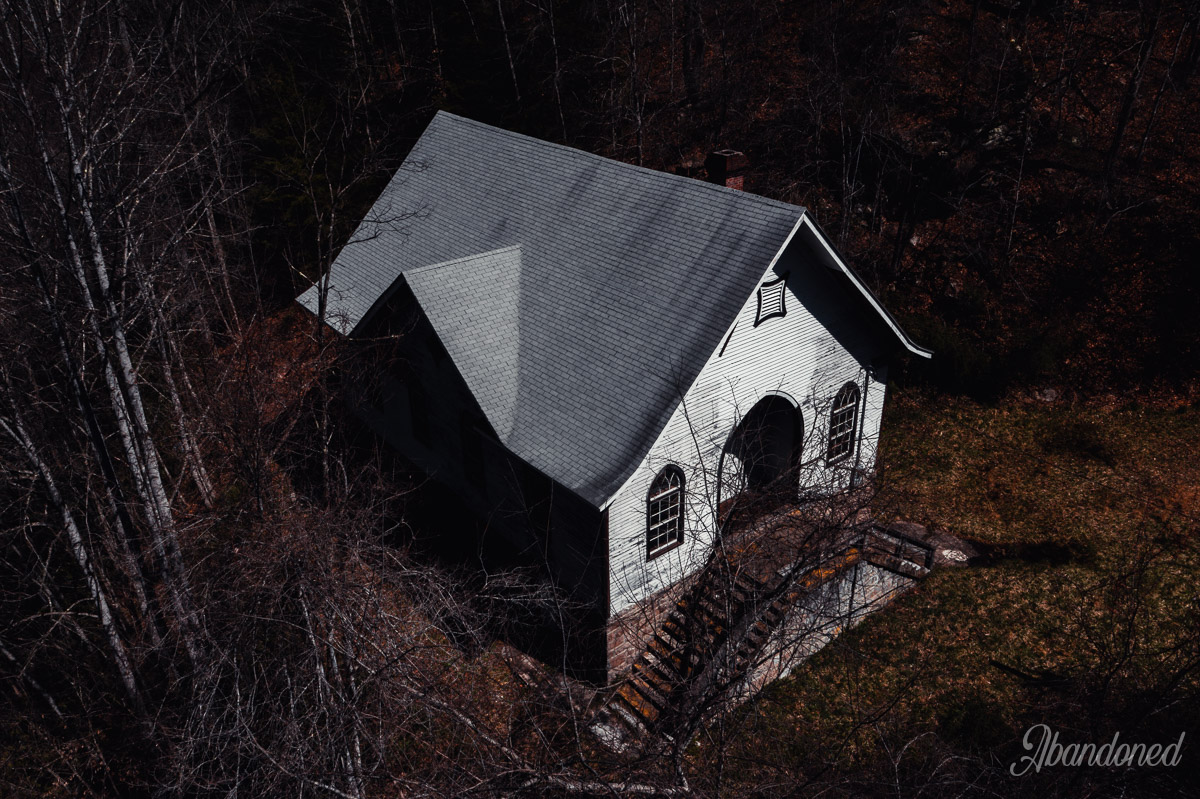Mining in the Winding Gulf coalfield of West Virginia began in the early 1900s, producing low-volatile smokeless coal, including metallurgical coal suitable for use in steel making. Mining was centered on the thick Beckley seam until it was economically exhausted by the 1950s, and the Pocahontas seam until the late 1980s.
Coal camps were developed by the mine operators to support their operations and included the basics: company-owned houses, stores, amusement halls, schools, and churches. After the coal seams were exhausted, these coal camps were all but abandoned and today, only a few reminders of this booming era remain.
I was pretty excited to come across two notable churches in the Winding Gulf that are still extant: the New Salem Baptist Church and the Wyco Church.
The New Salem Baptist Church was constructed in the Gothic Revival architectural style circa 1921 for African-Americans in the coal camp of Tams. Tams was a racially segregated community and was divided into the American Town, the Immigrant Town, and the Colored Town. The church was erected after the board of trustees of the congregation approached W.P. Tams, Jr., who owned the company town, requesting that a church be built for their community.
The church reached its peak during the 1930s with 350 members. Over time, the community declined as the mines closed. Eventually, residences in the Black Town of Tams were slowly removed by the Slab Fork Coal Company so that it could build and expand upon a preparation plant and complex for its No. 10 mine in the 1960s and 1970s. By the mid-1980s, the last resident of Tams had left and all of the buildings from the community, with the exception of the New Salem Baptist Church, were removed.
As of 2016, the New Salem Baptist Church was still active but had just a handful of worshippers.

Nearby is Wyco, which was developed by John Wilson for the Wyoming Coal Company. Wilson’s partner, Major W.T. Tams, who was serving in Europe during the First World War, had developed the Tams coal camp across the mountain prior to founding Wyco. A church near the superintendent’s residence was constructed in the late Gothic Revival architectural style circa 1917.
Attendance in the church began dropping by the late 1950s, partly because of adjoining coal mines being exhausted and mechanization, all of which resulted in the slow decline in Wyco. It eventually stopped offering services until it reopened in 1964 as the Wyco Independent Church, a non-denominational facility. It became the Wyco Freewill Baptist Church in 1972 and as the Wyco Independent Baptist Church in February 1977.
In 1990, after the last operator of the mines at Wyco, the Pittston Coal Company, closed the mines for good, the church was abandoned. On May 13, 2003, the Wyco Church was transferred to the Rural Appalachian Improvement League (RAIL) and partly restored.







